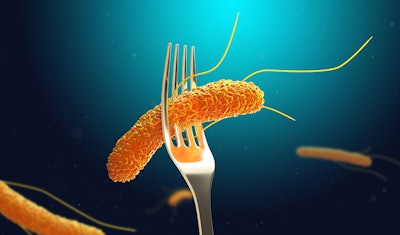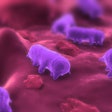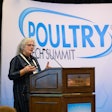
The spread of foodborne pathogens continues to climb – and chicken is one of the biggest culprits in transmission, reports the Centers for Disease Control and Prevention (CDC).
The report compared recently released 2019 data to the period between 2016 and 2018. It revealed that the rates of infection for Campylobacter, Cyclospora, Shiga toxin-producing Escherichia coli (STEC), Vibrio and Yersinia all increased.
Campylobacter and Salmonella were the two pathogens responsible for the largest proportion of illnesses, with chicken responsible for nearly a third of U.S. cases of Salmonella infections, according to the report. The CDC estimates that the consumption of contaminated poultry makes a million people sick each year.
Vaccine innovation to the rescue
The poultry industry is hard at work developing new vaccines for foodborne pathogens. Two serotypes of Salmonella, typhimurium and enteritidis, are on the decline thanks to widespread vaccinations in flocks.
"This observation, combined with a marked decline in Enteritidis infections in the United Kingdom after implementation of widespread chicken vaccination and improved farm hygiene, suggests that targeting other serotypes through poultry vaccination could be one way to reduce human illnesses in the United States," the report said.
WGS improves outbreak detection
Widespread adoption of whole genome sequencing (WGS) has made it easier to identify outbreaks and sources of pathogens.
“WGS provides detailed information to more effectively recognize outbreaks, determine resistance patterns, and investigate reoccurring, emerging, and persisting strains. However, because culture-independent diagnostic tests (CIDTs) do not yield isolates needed to perform WGS, the full potential of these new technologies can only be realized when laboratories are fully able to culture CIDT-positive specimens,” the report noted.
FoodNet, a collaboration between the CDC, 10 state health departments, the United States Department of Agriculture (USDA) Food Safety and Inspection Service and the Food and Drug Administration, collected the data for this report from 10 sources that make up approximately 15% of the U.S. population.
Like what you just read? Sign up now for free to receive the Poultry Future Newsletter.

















